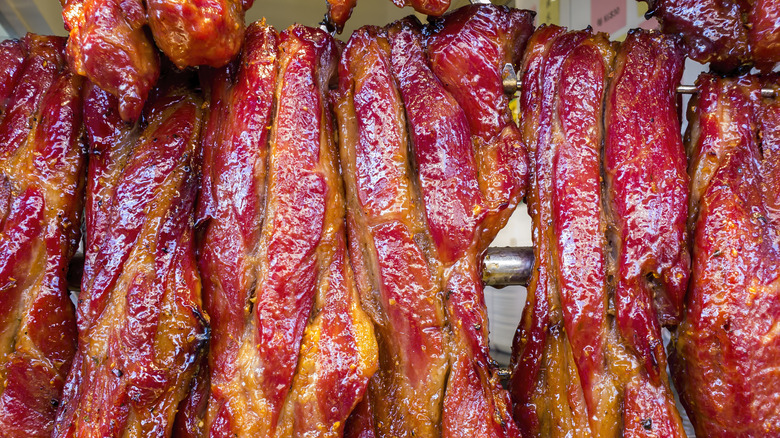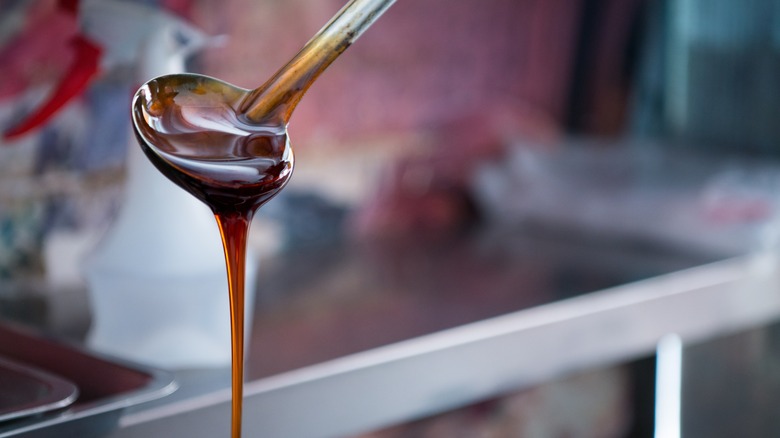Maltose Is The Secret Ingredient That Makes Chinese Char Siu So Sticky Good
The cuisine of the Middle Kingdom retains its reputation as one where restaurant food always tastes better than what you cook at home. Perhaps a certain level of leeway is allowed to anyone trying to replicate the numbingly spicy cuisine of Sichuan, or the fragrant desert spices of Xinjiang in their kitchen. But when it comes to the light touch of Cantonese food, where the aim is to showcase the ingredients, missteps can taste quite obvious and are frustrating for the home cook. One ingredient that can help you level up your Chinese cooking game is maltose, which is important for getting an enticing sticky, shiny lacquer on roasted meats, especially the iconic Cantonese red roasted pork dish, char siu.
Maltose is a syrup that's been used in Chinese culture for millennia but isn't that common in Western shops. That's why you'll often see it substituted with honey in Chinese BBQ glaze recipes — maltose is crucial for char siu, but also gives other roasted Chinese dishes like Peking Duck their dark, glossy sheen. But honey has a more floral or fruity flavor profile than maltose. Furthermore, maltose is stickier and less sweet than honey or simple syrup. It makes that glossy lacquered sheen possible without overpowering the natural flavor of the meat with a layer of candy.
What exactly is maltose, and how do you use it to make Char Siu?
Maltose may have been produced in China since the Shang dynasty and, as the name suggests, is made from malt — that is, grains of cereal soaked in water until they germinate. It is naturally, neutrally sweet, but it differs in taste and texture from table sugar because of small chemical differences between the two. Table sugar contains one glucose molecule and one fructose molecule, whereas maltose only has glucose molecules. This difference gives maltose only 30% to 60% as much sweetness as sugar and makes it almost solid at room temperature, with a stiff, dry, thick texture.
In order to use it for a BBQ glaze — this works for char siu pork as well as any dish where you want to create a lacquered effect — you'll first want to microwave the maltose to heat it up and make it easier to work with. Be careful with hot sugars because the combination of extreme heat and stickiness is dangerous. Remember to use gloves if necessary. It can then replace a few tablespoons of sugar in whatever marinade you are making, which will cause the sauce to cling better throughout the cooking process. Alternatively, if you have a marinade recipe you already trust but just want a better shine on the outside, mix maltose with a little vinegar and water and brush the glaze on at regular intervals for the last 15 to 20 minutes of cooking for a dark, glossy crust.

